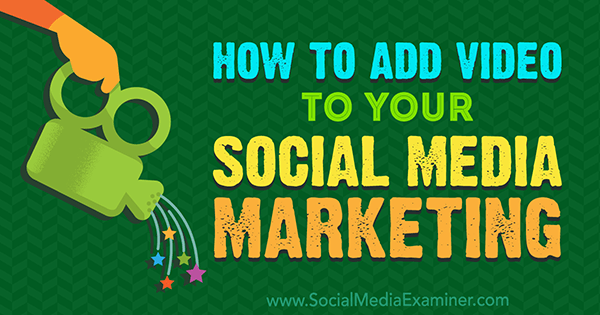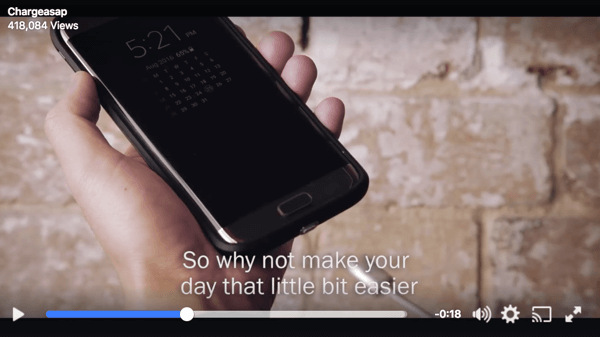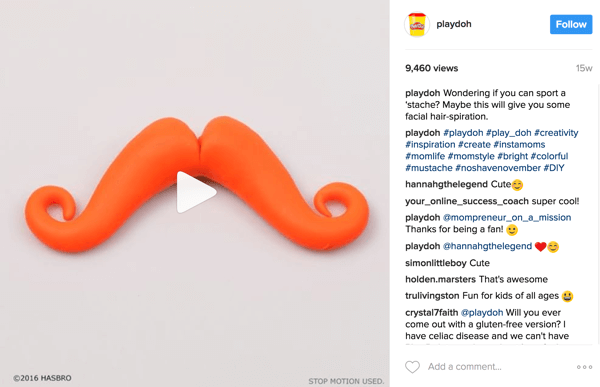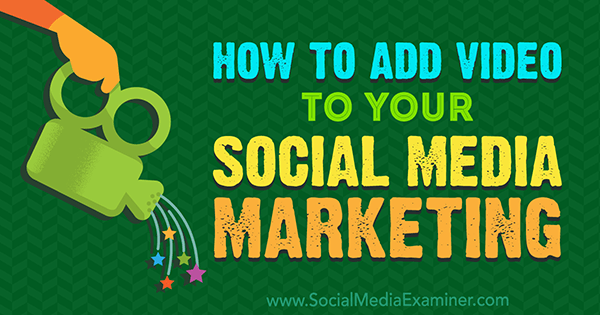Understanding what types of video work best on each social network will help you create a well-organized video strategy. #1: Produce the Right Video for Each Social Platform Each social network has its own opportunity for video content. Captions are essential to Facebook video because most Facebook users watch video without sound. Instagram On Instagram, you can add video to your story or post video to your feed. In fact, a Twitter report revealed that 82% of users watch video content on the platform. Snapchat Just like Instagram, Snapchat is all about visual content. Tackling Snapchat for marketing isn’t quite as simple as other networks. Before getting started, think about what you want to gain from investing time and resources in creating video content. Creating a theme helps users know what to expect and sets your company’s content apart from others. Cameras, microphones, lighting, editing equipment, and actors can add up quickly.
Want to add video to your social media marketing mix?
Wondering how to get started?
Understanding what types of video work best on each social network will help you create a well-organized video strategy.
In this article, you’ll discover four tips for adding video to your social media marketing.

#1: Produce the Right Video for Each Social Platform
Each social network has its own opportunity for video content. Before attempting to post videos on every platform, commit to mastering video on one or two networks first. You can easily incorporate video into your social media content by featuring your business’s best content for each platform.
As a social media giant, Facebook is among the essential video platforms. A report found that Facebook users watch approximately 100 million hours of video each day and Facebook has 8 billion daily video views.
When you plan video content for Facebook, understand what Facebook viewers actually enjoy. Captions are essential to Facebook video because most Facebook users watch video without sound. Captions are ideal if someone watches on a crowded train or in a quiet area. Additionally, many viewers will digest content more accurately by reading than hearing.
In 2016, Facebook added automatic captioning to both video ads and videos posted to Facebook pages. Facebook’s feature is based on voice-recognition software. You may want to review and edit captions for accuracy. In this video by Chargeasap, the captions reflect the video voiceover word-for-word. The text size and the contrast with the background make the captions easy to read.

Facebook users also enjoy live video. Facebook Live video is watched three times as much as regular video content and continues to gain popularity. Viewers expect live video to be less polished, so you can produce it without a big-budget production team.
Use live broadcasts to keep viewers in the “now” by sharing behind-the-scenes peeks at your events, new product demos, and more. For example, Penn Hongthong prepares her recipes on live video to promote her work as a TV show host, author, speaker, and chef.

Video content on Facebook tends to have a short shelf life if the video doesn’t have a viral, shareable appeal. Longer video content typically is a better fit for a network like YouTube.
On Instagram, you can add video to your story or post video to your feed. With Instagram Stories, you can stream live video or post a 10-second clip. Either way, your video stays on your story for 24 hours. Videos posted to your Instagram feed can be up to 1 minute long.
Because Instagram limits video length, planning for brief videos is important. This emphasis on short videos is different from other social media video networks. On Instagram, make your videos captivating, quick to digest, and direct.
This directness applies to your Instagram captions, too. Ensure your call to action is clear and concise and your captions support the story in your video content, not compete with it. This Nike Training video is a great example of a captivating video with a direct message and helpful captions.
Instagram users share roughly 95 million posts per day and spend an average of 21 minutes a day on the app. What does this mean? People are scrolling through their feeds at a lightning pace. To set up your Instagram videos for success, choose an attention-grabbing thumbnail, like this mustache from Play-Doh.

Twitter’s feed moves quickly, making it hard for organic Twitter content to stick. But when Twitter video connects with users, it can spread far and wide.
Twitter recently made live video available in the app, so you don’t need to use or download Periscope. This move shows the demand for live video within the native platform and the general need for video content on social channels. In fact, a Twitter report revealed that 82% of users watch video content on the platform.
Because 90% of users view Twitter videos on a mobile device, make your Twitter content mobile-friendly and watchable on the average smartphone, like this video from Philips Hue.
Control lights with your voice, an app, or even your watch! See @tldtoday connect #PhilipsHue to #AppleHomeKit. https://t.co/PyLz5e9Lad pic.twitter.com/OkS6zuDuJw
The same report stated that 70% of users find their videos by simply scrolling through Twitter and 25% are more likely to find content through friends. This means you should create Twitter videos that are engaging and shareable.
Avoid creating in-depth tutorials or videos that only showcase your products. Does your content educate without…

COMMENTS